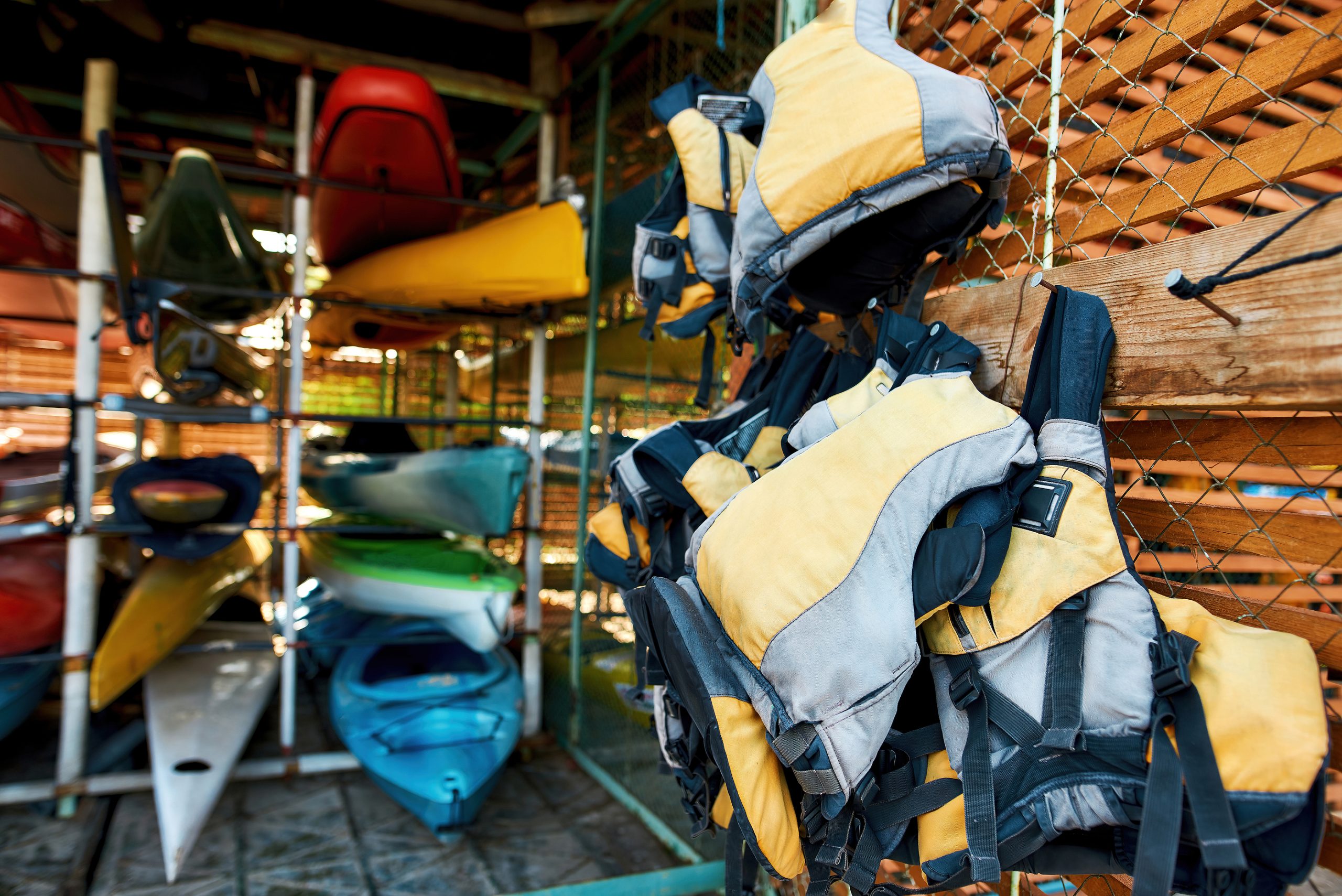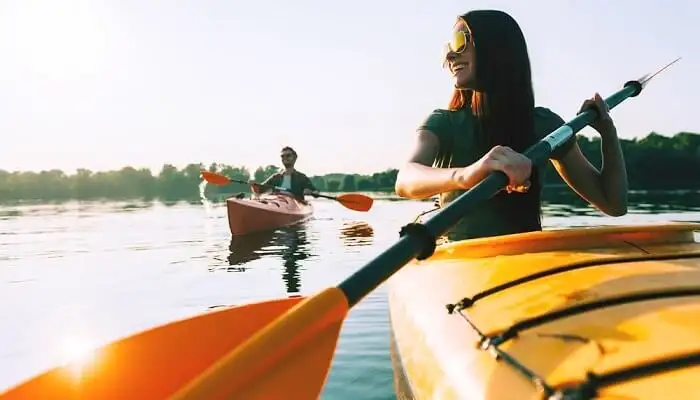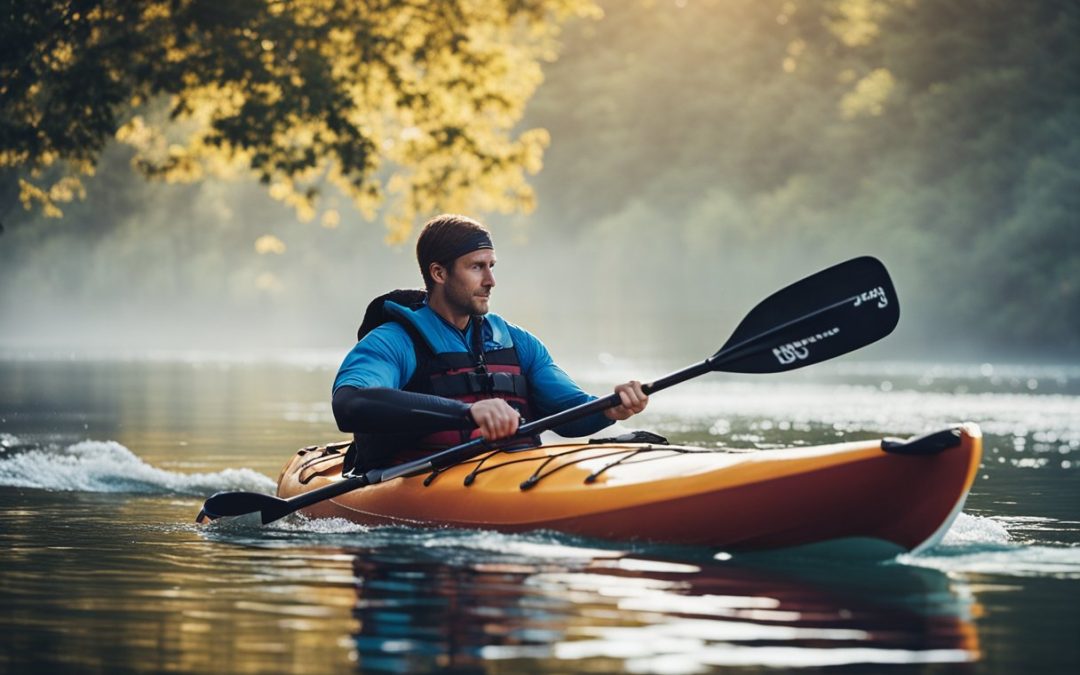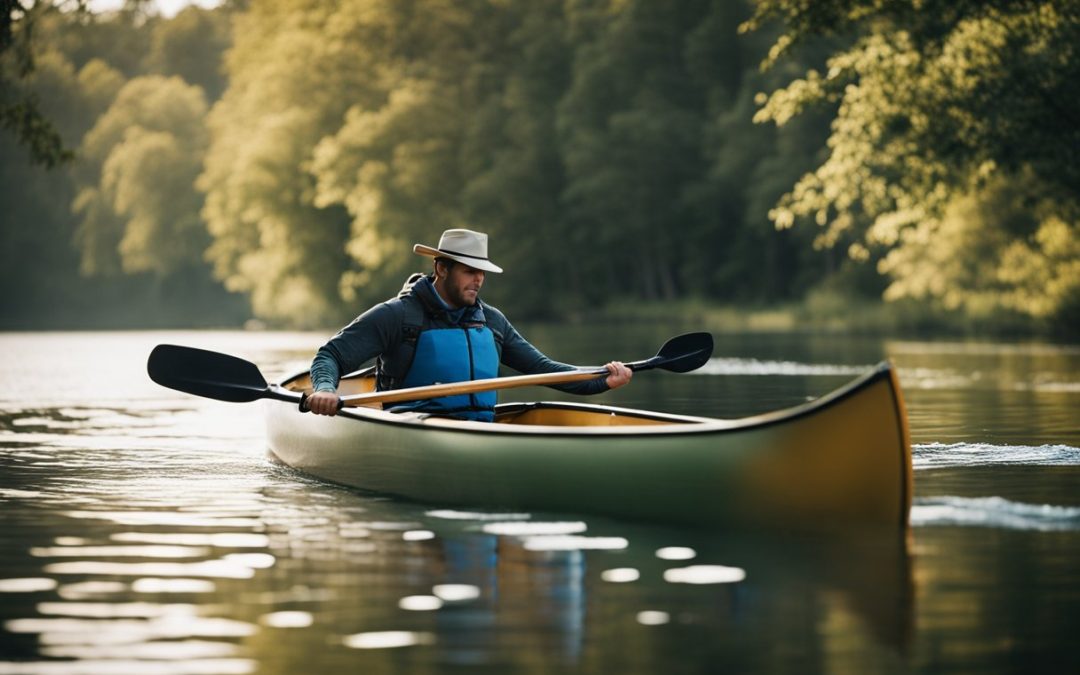Best Ways to Store a Kayak in a Garage or Shed: Expert Tips for Space-Saving and Damage Prevention
Kayaking is a fantastic outdoor activity that can provide hours of enjoyment and exercise. However, when the kayaking adventure is over, the question of how to store the kayak arises. Proper storage is crucial to protect the kayak from damage and extend its lifespan. Many kayakers store their kayaks in a garage or shed, but finding the best way to store them can be challenging.
Understanding the importance of proper kayak storage is critical to maintaining the kayak’s integrity. Improper storage can lead to damage, such as warping, cracking, and fading. The kayak’s material, whether plastic, fiberglass, or composite, can also affect the storage requirements. Choosing the right location and type of kayak storage solution is essential to ensure the kayak stays in good condition. Several storage options are available, including wall-mounted racks, overhead suspension systems, upright storage, wall-mounted sling sets, and portable stands. Each has its advantages and disadvantages, so it is essential to consider the space available, the number of kayaks to store, and the budget before selecting a storage solution.
Key Takeaways
- Proper storage is crucial to protect the kayak from damage and extend its lifespan.
- Choosing the right location and type of kayak storage solution is essential to ensure the kayak stays in good condition.
- Wall-mounted racks, overhead suspension systems, upright storage, wall-mounted sling sets, and portable stands are all viable storage options with advantages and disadvantages.
Understanding the Importance of Proper Kayak Storage
Proper kayak storage is essential to ensure that your kayak remains in good condition and lasts for many years. Kayaks are expensive investments, and it is important to protect them from damage caused by improper storage. Here are some reasons why proper kayak storage is important:
- Protects the kayak from physical damage: A kayak not stored properly can get scratched, dented, or even cracked. This can happen if stored in a way that puts pressure on the hull or stacked on other items.
- Prevents damage from UV rays: Exposure to sunlight can cause the kayak’s color to fade and the plastic to become brittle. This can weaken the kayak’s structure and make it more prone to cracking.
- Prevents damage from moisture: If a kayak is stored in a damp environment, it can develop mold and mildew. This can cause the kayak to smell bad and can even lead to health problems for the person using it.
- Saves space: Kayaks are long and bulky, and storing them can take up a lot of space. Proper storage solutions can maximize space and keep the kayak out of the way.
There are various ways to store a kayak; the best option depends on the available space and personal preferences. Some popular storage solutions include wall-mounted racks, overhead suspension systems, upright storage, wall-mounted sling sets, and portable stands. It is important to choose a storage solution that is sturdy and secure and that does not put unnecessary pressure on the kayak.
By understanding the importance of proper kayak storage, paddlers can take steps to protect their investment and ensure that their kayak lasts for many years.
Choosing the Right Location
Choosing the right location is essential when storing a kayak in a garage or shed. The right spot will protect your kayak from damage and keep it in good condition for years. Here are some factors to consider when choosing a location for your kayak:
Garage
If you plan to store your kayak in a garage, there are a few things to keep in mind. First, make sure the garage is dry and well-ventilated. Moisture can damage your kayak, so choosing a spot that’s not prone to leaks or humidity is important.
Second, consider the size of your garage. You can store your kayak on a rack or overhead hoist if you have a large garage. If your garage is smaller, you may need to store your kayak on its side or end.
Third, think about accessibility. Ensure you can easily get your kayak in and out of the garage without hitting any obstacles or damaging your kayak.
Shed
If you plan to store your kayak in a shed, there are a few things to keep in mind. First, make sure the shed is dry and well-ventilated. Moisture can damage your kayak, so choosing a spot that’s not prone to leaks or humidity is important.
Second, consider the size of your shed. You can store your kayak on a rack or overhead hoist if you have a large shed. If your shed is smaller, you may need to store your kayak on its side or end.
Third, think about accessibility. Ensure you can easily get your kayak in and out of the shed without hitting any obstacles or damaging your kayak.
Choosing the right location for your kayak is essential for protecting it from damage and keeping it in good condition. Considering factors like moisture, size, and accessibility, you can find the perfect spot to store your kayak in your garage or shed.

Types of Kayak Storage Solutions
When it comes to storing a kayak in a garage or shed, several types of storage solutions are available. Each solution has advantages and disadvantages, so choosing the one that best fits your needs is important.
Wall Mounts
Wall mounts are a popular storage solution for kayaks. They are easy to install and allow the kayak to be stored vertically on a wall, saving valuable floor space. Wall mounts come in different styles, including J-hooks, padded hooks, and cradles.
J-hooks are the most common wall mount type designed to hold the kayak by the scupper holes. Padded hooks and cradles, on the other hand, provide more support and protection for the kayak.
When installing wall mounts, it’s important to ensure that they are securely attached to the wall studs to prevent the kayak from falling.
Ceiling Hoists
Ceiling hoists are another popular storage solution for kayaks. They allow the kayak to be stored overhead, freeing up floor space. Ceiling hoists typically consist of a pulley system that lifts the kayak off the ground and suspends it from the ceiling.
Ceiling hoists are ideal for those with limited floor space, but they can be difficult to install and require a sturdy ceiling to support the kayak’s weight.
Freestanding Racks
Freestanding racks are a versatile storage solution for kayaks. They can be placed anywhere in the garage or shed, allowing the kayak to be stored horizontally or vertically.
Freestanding racks come in different styles, including A-frames and H-racks. A-frames are designed to hold the kayak horizontally, while H-racks can hold the kayak vertically.
When choosing a freestanding rack, it’s important to ensure that it is sturdy enough to support the weight of the kayak and that it has padding or protection to prevent damage to the kayak.
Overall, each kayak storage solution has its advantages and disadvantages. Choosing the one that best fits your needs and provides the most protection for your kayak is important.
Steps to Store a Kayak
Storing a kayak properly is essential to keep it in good condition so it’s ready for use whenever you want to hit the water. Here are some simple steps to store a kayak in a garage or shed:
Cleaning the Kayak
Before storing a kayak, it’s important to clean it thoroughly to remove any dirt, debris, or saltwater that may have accumulated on it. Here are the steps to follow:
- Rinse the kayak with fresh water to remove any loose debris.
- Use mild soap and a sponge or soft brush to clean the kayak.
- Rinse the kayak again with fresh water to remove any soap residue.
- Dry the kayak with a towel or let it air dry completely.
Positioning the Kayak
Positioning the kayak correctly is essential to prevent any damage to the kayak and ensure that it takes up as little space as possible. Here are some tips on how to position the kayak:
- Place the kayak on its side, with the cockpit facing up.
- If storing multiple kayaks, stack them on top of each other, with foam padding or towels between each kayak to prevent scratches.
- If storing the kayak on its own, use a kayak stand or rack to keep it off the ground and prevent damage.
Securing the Kayak
Securing the kayak is important to prevent it from falling or shifting during storage. Here are some ways to secure the kayak:
- Use straps or bungee cords to secure the kayak to a rack or stand.
- If storing multiple kayaks, use straps or bungee cords to secure them together.
- If storing the kayak on the ground, use foam padding or towels to cushion the kayak and prevent any damage.
By following these simple steps, you can store your kayak safely and ensure it remains in good condition for your next adventure on the water.

Pros and Cons of Storing a Kayak
Storing a kayak is a crucial aspect of owning one. Proper storage ensures that the kayak remains in good condition and is ready for use whenever needed. However, there are pros and cons to the different types of kayak storage available.
Pros of Storing a Kayak
Protection from the Elements
Storing a kayak indoors, whether in a garage or shed, protects it from the elements. This is especially important for those living in extreme weather areas. Indoor storage keeps the kayak out of the sun’s UV rays, which can degrade and discolor the hull over time.
Convenience
Storing a kayak in a garage or shed is convenient as it is always readily accessible. This is especially important for those who frequently use their kayaks. It saves time and effort in transporting the kayak to and from the water.
Security
Storing a kayak in a garage or shed provides security against theft. It is less likely to be stolen when stored in a secure location.
Cons of Storing a Kayak
Space Limitations
Storing a kayak in a garage or shed may only be feasible for some due to space limitations. It requires some floor space, which may not be available in smaller garages or sheds.
Cost
Storing a kayak in a garage or shed may also cost. It may require the purchase of racks or hoists, which can be expensive.
Accessibility
Storing a kayak in a garage or shed may not be as accessible as storing it outdoors. It requires opening and closing the garage or shed, which can be inconvenient for those who frequently use their kayaks.
Storing a kayak in a garage or shed has pros and cons. It provides protection, convenience, and security but may come with space limitations, cost, and accessibility issues. It is important to consider these factors when deciding on the best storage option for a kayak.
Maintaining Your Stored Kayak
Properly storing your kayak is important to protect it from damage, but it’s also important to maintain it while it’s in storage. Here are some tips for maintaining your stored kayak:
Regular Inspection
It’s important to inspect your kayak regularly in storage to ensure it’s in good condition. Check for any signs of damage, such as cracks, scratches, or dents. If you notice any damage, take the necessary steps to repair it before using your kayak again.
You should also check the kayak’s hardware, such as the bolts and screws, to make sure they are tight and secure. Loose hardware can cause damage to the kayak and make it unsafe to use.
Proper Ventilation
Proper ventilation is important to prevent mold and mildew from growing on your kayak in storage. Make sure that the area where you store your kayak is well-ventilated. If you’re storing your kayak in a garage or shed, consider leaving the door or window open to allow air to circulate.
You can also use a dehumidifier to reduce the humidity in the area where your kayak is stored. This will help prevent mold and mildew from growing on your kayak.
In addition to regular inspection and proper ventilation, it’s important to store your kayak in a way that protects it from damage. Consider using a wall-mounted rack, overhead suspension system, or upright storage to keep your kayak off the ground and out harm’s way. Proper storage and maintenance will prepare your kayak for your next adventure on the water.

Potential Problems and Their Solutions
Deterioration Due to Improper Storage
Improper storage can lead to the deterioration of kayaks over time. Exposure to sunlight, moisture, and extreme temperatures can cause the material to break down and weaken. This can result in cracks, fading, and warping, compromising the kayak’s structural integrity and making it unsafe to use.
It is important to store kayaks in a dry, cool, and shaded area to prevent deterioration due to improper storage. Avoid storing kayaks in direct sunlight or near heat sources, such as heaters or radiators. Keeping kayaks off the ground and away from walls is also important to prevent moisture buildup. Using a kayak cover or tarp can also help protect the kayak from the elements.
Damage from Pests
Pests such as rodents and insects can cause damage to kayaks if they are not stored properly. Rodents can chew through the material, while insects can burrow into the foam and cause it to break down.
To prevent damage from pests, it is important to store kayaks in a location free from pests. This can be achieved by sealing any gaps or cracks in the walls or floors, using traps or bait to control pests, and regularly cleaning the storage area to prevent the buildup of debris and food sources for pests. Inspecting kayaks regularly for signs of damage and addressing any issues promptly to prevent further damage is also important.
Conclusion
Storing a kayak in a garage or shed is an excellent way to protect it from the elements and keep it in good condition. Several ways to store a kayak include wall-mounted racks, overhead suspension systems, upright storage, wall-mounted sling sets, and portable stands. Each method has advantages and disadvantages, so choosing the one that best suits your needs is important.
Wall-mounted racks are a great option if you have limited floor space in your garage or shed. They allow you to store your kayak vertically against the wall, which frees up valuable floor space. Overhead suspension systems are another good option, as they allow you to store your kayak out of the way and off the ground. Upright storage is a simple and effective way to store your kayak, but it does take up more floor space than wall-mounted racks or overhead suspension systems.
Wall-mounted sling sets are a good option for storing your kayak in a tight space. They allow you to store your kayak horizontally against the wall, which is ideal if you have limited floor space. Portable stands are a good option for moving your kayak around frequently. They are easy to assemble and disassemble and can be stored in a small space when not in use.
No matter which method you choose, it’s important to keep your kayak clean and dry to prevent damage from moisture. You should also store your kayak in a shaded area to protect it from the sun’s UV rays, which can degrade and discolor the hull over time.
Storing a kayak in a garage or shed is a great way to keep it in good condition and protect it from the elements. With the right storage method and a little care, your kayak can last for many years.
Frequently Asked Questions
How do I safely store my kayak in a garage or shed?
To safely store a kayak in a garage or shed, keeping it away from potential hazards, such as sharp objects or extreme temperatures, is important. The best way to do this is to store the kayak off the ground, preferably on a rack or suspension system. It’s also important to make sure the kayak is properly secured to prevent it from falling or being damaged.
How can I maximize space when storing my kayak?
Maximizing space when storing a kayak can be achieved using vertical storage options such as wall-mounted racks or overhead suspension systems. These options allow the kayak to be stored off the ground, freeing up valuable floor space.
What are some DIY options for kayak storage in a garage or shed?
DIY options for kayak storage in a garage or shed include building a wall-mounted rack using PVC pipes or wood, creating an overhead suspension system using pulleys and rope, or using loop straps to hang the kayak from eye bolts or hooks anchored into the wall studs.
Is it better to store a kayak vertically or horizontally?
Both vertical and horizontal storage options have their advantages and disadvantages. Vertical storage is great for maximizing space, while horizontal storage is better for preventing the warping or deformation of the kayak over time. Ultimately, the best option depends on the available space and personal preference.
Can I store my kayak outside, or is it best to keep it indoors?
While indoor storage is preferred, outdoor storage can be an option if the kayak is properly covered and protected from the elements. It’s important to remember that prolonged exposure to the sun and other weather conditions can cause damage to the kayak over time.
What materials should I use to build a kayak storage rack for my garage or shed?
The materials used to build a kayak storage rack can vary depending on personal preference and budget. PVC pipes, wood, metal, and even recycled materials can all be used to create a sturdy and reliable storage rack. It’s important to ensure the materials are durable enough to support the kayak’s weight and are resistant to any potential hazards, such as moisture or pests.













